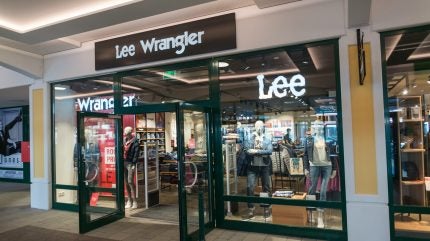
The update comes as the company disclosed a slight revenue decline of 1% year-over-year, totalling $623m in the first quarter of fiscal 2025 (Q1 FY25).
This was driven by the 2% drop in global wholesale, which was somewhat mitigated by a 5% rise in direct-to-consumer sales globally.

Discover B2B Marketing That Performs
Combine business intelligence and editorial excellence to reach engaged professionals across 36 leading media platforms.
Kontoor Brands president, chief executive officer and board of directors chairman Scott Baxter said: “Our strong first quarter results reflect the operational agility that is a cornerstone of our business. We continued to strengthen our brands, drive market share gains, and grow our presence across categories and channels of distribution. And, the strength of our gross margin drove strong underlying earnings growth, cash generation and further improvement in our returns on capital.”
Key metrics in Q1 FY25
The company’s US revenue remained steady at $493m in Q1 FY25, while international revenue fell by 7% to $130m.
Wrangler’s worldwide revenue saw a 3% increase to $420m, spurred by a similar rise in US sales, however, international revenue for the brand did not change from the previous year.

US Tariffs are shifting - will you react or anticipate?
Don’t let policy changes catch you off guard. Stay proactive with real-time data and expert analysis.
By GlobalDataConversely, global revenue for the Lee brand dropped by 9% to $200m, with an 8% decline in US sales and an 11% fall internationally.
In the quarter, Kontoor Brands’ gross margin improved significantly to 47.5% on a reported basis and to 47.7% on an adjusted basis, a growth of 230 and 200 basis points respectively.
The firm’s reported operating income was $73.29m, while adjusted operating income climbed by 4% to $96m.
Net income for the quarter stood at $42.88m, marking a 28% decrease from the previous year’s $59.51m, which translates to diluted earnings per share (EPS) to $0.76 on a reported basis, compared with $1.05 in Q1 FY24.
Update on Helly Hansen acquisition
Kontoor Brands has received all necessary regulatory approvals and anticipates finalising the deal by the end of May 2025, subject to standard closing conditions. The acquisition is projected to contribute roughly $425m to the company’s 2025 revenue and add about $37m to adjusted operating income and around $0.20 to adjusted EPS.
The company expects the addition to contribute approximately $50m to the company’s operational cash flow in 2025.
Outlook and Tariff impact
For the second quarter, the company does not foresee these tariff adjustments having any effect on operating income.
However, starting in the third quarter of 2025, the company plans to begin mitigating the $50m impact resulting from these recent tariff changes.
Mitigation strategies will include a mix of strategic price adjustments, enhancements to sourcing and production processes within its international supply chain, improved inventory control, strengthened supplier relationships, and additional measures, the company noted.
The company aims to significantly counterbalance the financial effects caused by the newly implemented tariff policies over a period ranging from 12 to 18 months.
In 2025, Kontoor Brands forecasts revenue between $3.06bn and $3.09bn, suggesting an increase of about 17 to 19% from the previous year.
Excluding Helly Hansen’s impact, the company predicts a revenue growth of about 1 to 2% for full-year 2025, slightly lower than the previously estimated range of 1 to 3%.
Scott Baxter said: “Our outlook reflects the enhanced growth, earnings and cash flow profile of our portfolio, supported by the significant benefits of Project Jeanius and the expected addition of Helly Hansen.”
“We expect the near-term operating environment to remain volatile and tariff policy changes present a significant headwind to our business.”
He added: “Our first quarter results were stronger than expected, and we remain on track to deliver the full year outlook we provided in February and have increased the expected contribution from Helly Hansen. We are focused on strengthening our brands, continuing to take market share, and delivering strong business fundamentals and operational execution.”





